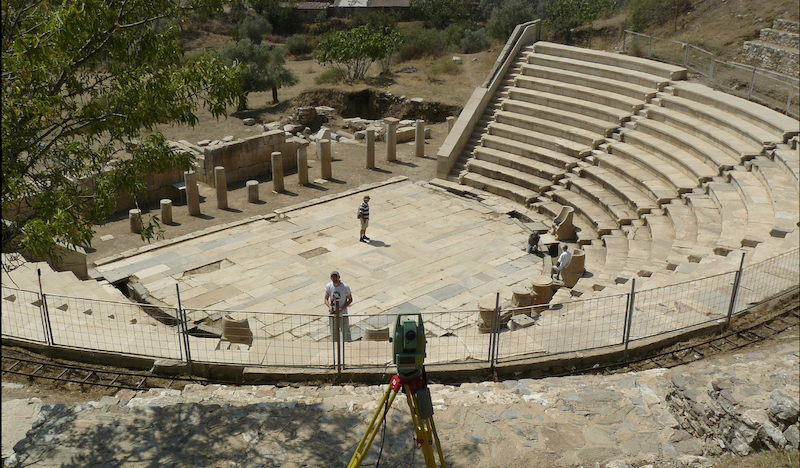
Excavation work at the ancient Greek city of Metropolis will focus on preparing the site’s acropolis, agora, Araplitepe Church, and water wells for visitors this season.
The aim is to restore the eastern gate of the Hellenistic acropolis and to uncover the agora —central public space or square—to reveal the entire plan of the church, as well as to investigate the water wells, which have kept their function from the Roman period, according to Turkish news site Daily Sabah.
Occupation at the site in western Turkey’s Izmir province dates back to the Neolithic period, with current archaeological work funded through the Sabancı Foundation and Turkey’s Ministry of Culture and Tourism.
A temple at the site, dedicated to Ares, god of war, is among just two known temples of its kind.
In ancient Greek times, the Agora of Athens served as the commercial, social, and political hub of the entire city, where an open-air market would also be held at certain intervals. It was the best place for citizens to meet up and debate the future of the city and any of the many other issues of the day.
Various temples built to worship the Greek gods surrounded the Agora, which meant that this space also functioned as a vital religious center.
Ancient Metropolis Will Be Readied For Visitors
The Metropolis’ acropolis encompasses 10,500 square meters, or 113,000 square feet, with the intention of making it a destination for visitors. Mosaics, which were first found last year in the agora, will also be on display.
For the massive cistern structure there, where excavation began three years ago, the aim is that it be completely uncovered and completed. Work will also begin for the restoration and conservation of the 435-meter-long (1,427 foot) fortified walls that surround the acropolis, Daily Sabah noted.
Work will include restoring the eastern gate, the main entrance of the acropolis. The timeline for completion is five years.
At the bottom of the well that was discovered, archaeologists found hundreds of ceramic pieces and jugs in the furnace of the bathing area. Experts believe water supplied from the well, at a depth of about eleven meters, was used in the bathing section during the Roman period. It was believed to have been last used about 1,800 years ago.
Excavation work on the ancient city began in 1990, tracing its past from the late Neolithic settlements to the Classical Age and through to the Ancient Greek and Roman eras, as well as the Byzantine and Ottoman periods.
Work has included an Ancient Greek theater, parliamentary building, a columned gallery, two bath structures built during the Roman Empire, and a sports area complex, the report noted.
Archaeologists have also discovered “over 11,000 ceramics, coins, glass, architectural pieces, figures, sculptures, bone and ivory artifacts along with various metal items,” the Daily Sabah reported.
Work continues despite the ravages of climate change, the fastest growing threat to ancient Greek cultural monuments and heritage sites all across the world. Whether the threat is from more frequent wildfires, coastal erosion, flooding, changed rainfall patterns, or impacts of changes in heat and humidity on building materials, climate change impacts will be critical for the preservation and management of pretty much all monuments in the future.
See all the latest news from Greece and the world at Greekreporter.com. Contact our newsroom to report an update or send your story, photos and videos. Follow GR on Google News and subscribe here to our daily email!



